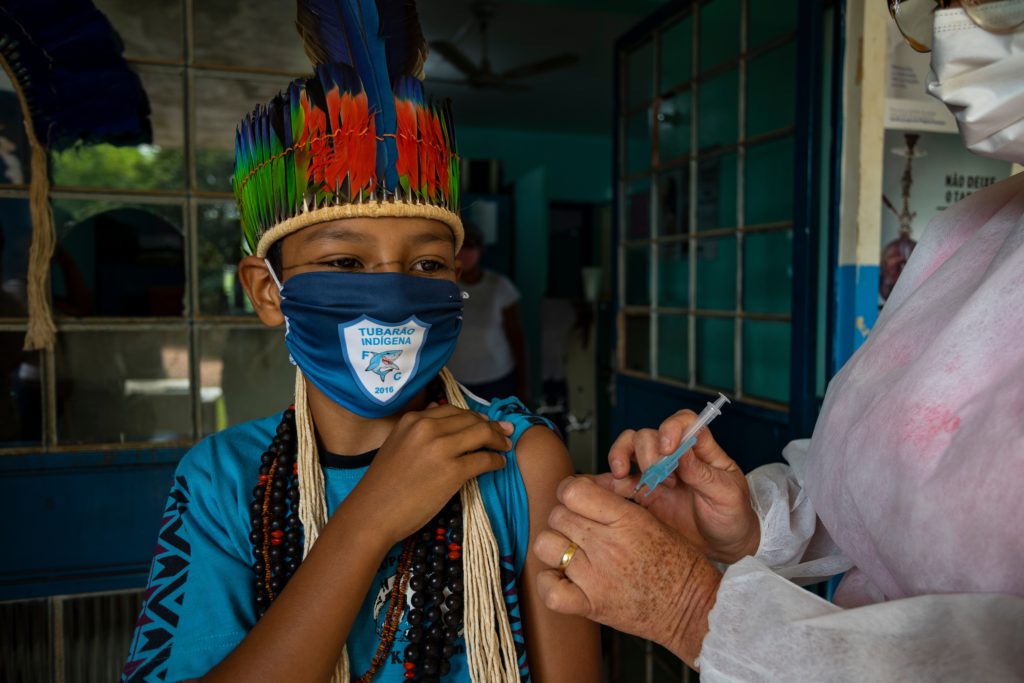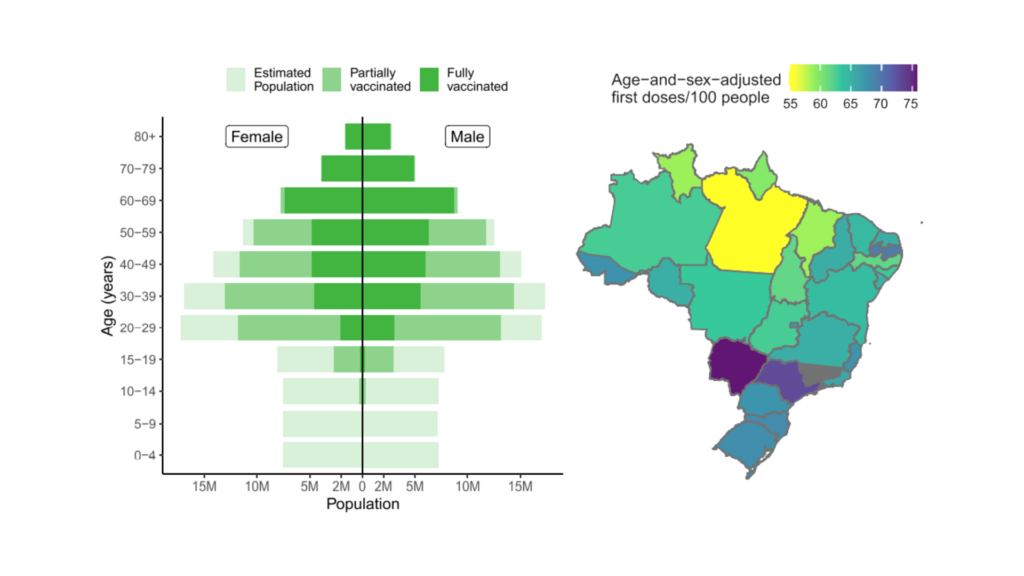- PT
- |
- EN
 Study with IDOR participation analyzes socioeconomic differences in the vaccination process in the country
Study with IDOR participation analyzes socioeconomic differences in the vaccination process in the country
Published in August in the scientific journal The Lancet Regional Health, a Brazilian study with the participation of the Instituto D’Or de Pesquisa e Ensino (IDOR) analyzed vaccination against covid-19 in Brazil up to the present day, taking into account relevant differences associated with socioeconomic factors in the population.
Inequality in access to vaccination was one of the factors that contributed to the spread of the pandemic and the emergence of new variants. And this can be observed both nationally and internationally because while developed countries guaranteed batches of doses, less favored nations had difficulty in securing vaccines and programming the vaccination schedule. It is worth remembering that access to the vaccine is part of a complex network that involves the production, distribution, and application of immunizers, which were still scarce in the middle of the pandemic.
In the study carried out by Brazilian institutions, national data obtained through the National Immunization Program Information System (SI-PNI) were considered, which provided demographic information on the population, such as age, gender, and place of residence, in addition to vaccination data, such as dose, date, and local of administration. Other data obtained from the last Brazilian Demographic Census, carried out in 2010, evaluating the Human Development Index (HDI) were also used in the research.
At the beginning of vaccination, the PNI established a national calendar based on population age, with some local adaptations, starting with the vaccination of indigenous people, health workers and people over age 90. Four vaccines were applied in the country: Two doses of Sinovac (CoronaVac) or Oxford / AstraZeneca or Pfizer / BioNTech, or a single dose of Janssen. The study in question evaluated whether socioeconomic differences could affect the Brazilian national vaccination rate.
According to the PNI, more than 200 million doses were applied, between the first, second or single dose, from January 17 to August 31, 2021. About 90% of the population over 60 years was vaccinated with the two doses.
Geographically, the distribution of doses had discrepancies, with the North, Northeast and Midwest having the lowest coverage (with Pará obtaining approximately 54 doses for each group of 100 people), while the South and Southeast had the highest rates (in which São Paulo had 73 doses per 100 people).

Image 1: Graph of vaccination by age. In light green is the estimated population and in dark green is the fully vaccinated population. Image 2: Map of Brazil with vaccine distribution by age and gender. The lighter it is, the fewer people were vaccinated, and the darker it was, the more people were vaccinated.
Evaluating the socioeconomic characterization of the counties and the average doses, the locations that were classified with low HDI (mostly in the North and Northeast regions) had fewer doses applied (63 doses per 100 people) when compared to locations with medium HDI (68) and high HDI (72).
From January to August 2021, there were more than 1 million hospitalizations and more than 300,000 hospital deaths in Brazil. Although rates have decreased over the course of vaccination, municipalities with low HDI had a lower rate of death reduction when compared to counties with medium or high HDI.
The article observes that municipalities with low HDI were directly related to a low supply of vaccines so that the control of the pandemic situation in these locations was lower when compared to more developed regions. Another factor that influenced the distribution of vaccines was the performance of the Primary Health Care team – APS – (health centers, family clinics, etc.), which was also reduced in low HDI municipalities. The greater the coverage of the teams, the better the results, suggesting that investment in preventive care can support the organization of the vaccination program.
The study indicates that low local socioeconomic development was associated with a decrease in the supply of the first dose of vaccination, causing less pandemic control in these locations when compared to more developed regions. In addition, the research reinforces that the SUS and the APS collaborate to reduce inequality about concerning access to vaccines by the most vulnerable population.
16.09.2022